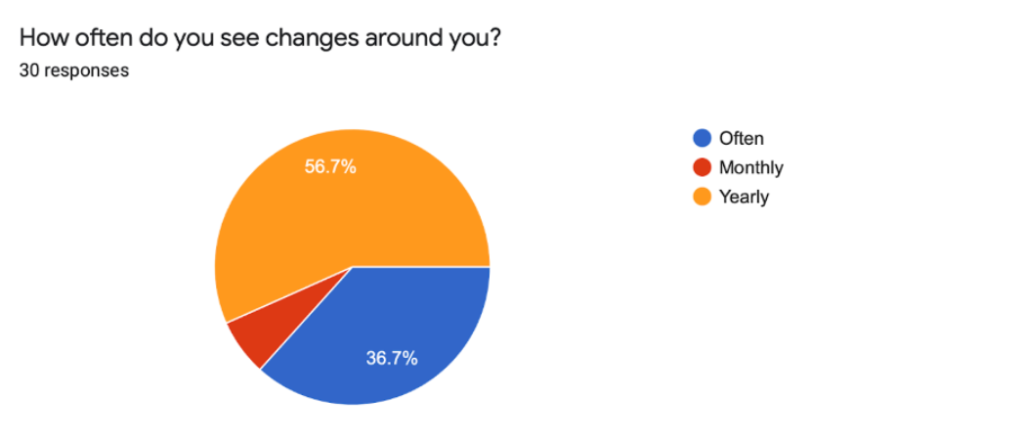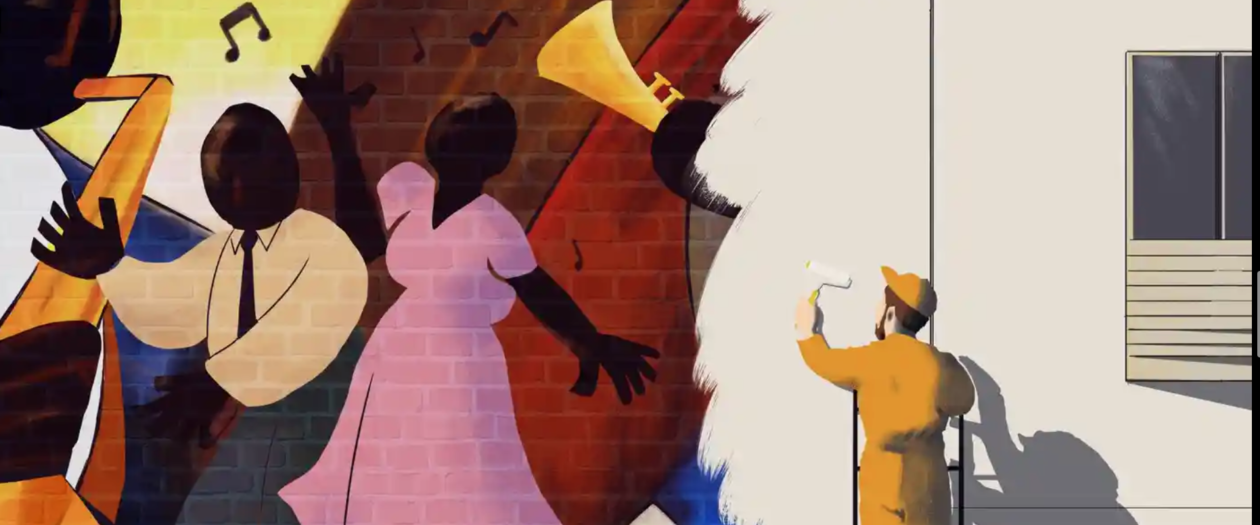An online survey of the Harlem community was conducted from November 29th, 2020 to December 3rd, 2020 on multiple social media platforms such as snapchat. It was available for Harlem residents and civilians to take it. The purpose of this survey was to evaluate how the tenants of Harlem are affected as a result of residential gentrification in the neighborhood. The methods section went on with some more specific details about the sample sizing as well as why some questions were chosen.
Our findings from the survey concluded that current Harlem residents see changes in their community yearly, the responses that were made were mostly from the Hispanic community in Harlem. The questions that were covered in our survey was their ethnic/culture background, in order to see which demographic in Harlem has seen the most changes. If there have been any major changes in their community that was noticeable, how often they notice changes happening in their community. And lastly, if they consider themselves part of the community, we decided to choose this question so that we can see where each person placed themselves in the community which we found that it was important to know in order to further analyze the responses. Down below you will get to see the results as well as the analyzes for the survey questions.

See Figure 1 Above:
The question, “What is your ethnic/cultural background? ” It was a significant question that was asked in the online survey. We wanted to know the backgrounds of the people who responded to our research so that we could interpret the following questions. Based on the pie chart, the majority of people living/visiting Harlem are Hispanics (56.7%) and the second largest are Afro-Americans (23.3%). Which means out of 30 people, 17 of them were Hispanic and 7 were Afro- Americans. This data allows us to show that most of the findings of these individuals’ answers are accurate and beneficial to our study because it gives us a perspective if the POC, people of color, are the ones that are mostly being affected by renovation in Harlem.

See Figure 2 Above:
The findings of how often residents take the MTA in Harlem added the most to our study. It shows how the MTA brings in new people (24.1% every day), the more people that come in the more businesses start to get notice of the community. 44.8% answered that they use the MTA in Harlem once a week. Knowing that 31% of people use the MTA weekly is important to our research since the more businesses come in the more prices rise, the more prices rise the more the wealthy people start to take notice and move into the community bringing up the demand for housing. The new demographic that is being brought into the community causes the old tenants to be displaced meaning that the community will slowly start to go from people of color to a wealthier demographic.

See Figure 3 Above:
As gentrification becomes prominent in Harlem, displacement becomes a growing concern for the residents. Questions covered the topic of if they had seen major changes in the Harlem community since the gentrification of Harlem has led to the residents questioning their place in Harlem being forgotten. All the participants of the survey were then asked if they considered themselves part of the community. Among the 30 participants who answered, 10 participants responded that they do consider themselves part of the Harlem community (33.3%), 6 participants answered they do not (20%), and 14 answered that they are in between (46.7%).

See Figure 4 Above:
Our findings conclude that tenants are witnessing many changes in Harlem yearly. Questions covered the topic of if residents and visitors of Harlem are seeing changes. The tenants and often visitors of Harlem who took the survey were asked how difficult notice changes in Harlem. Among the thirty participants who answered the question, 17 answered yearly (56.7%), 11 found changes in Harlem often (36.7%), 2 saw changes monthly (6.7%). This is important to note how often people see changes in Harlem because it reveals that gentrification is becoming prominent and changes are being made in the community overlooking the residents in Harlem. See figure 4 above.
While the graphs above focused on the statistical data on the issues of increasing gentrification in Harlem and its impacts on their personal connections to the community, survey participants were also given the opportunity to explicate their own perspectives. When asked if participants considered gentrification affecting their lifestyle, many responded that rent was increasing, and Harlem was becoming too expensive to live in. Most notable responses, from those who live in subsidized housing, had a common consensus of affordability. When asked “Have you observed changes that have impacted your neighbors or yourself?,” one simply stated that it provides “I am starting to see more new people and less of the ones I recognize” while another made note that “These houses are very modern and the rent for each building is extremely high.


